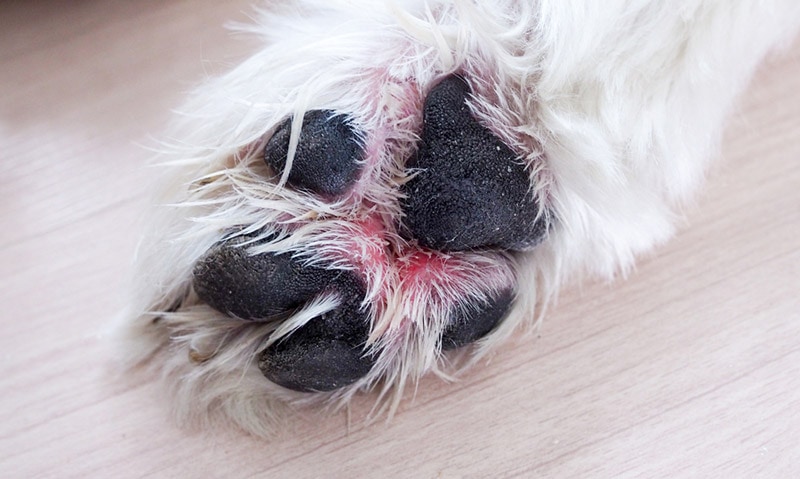What Is a Jackal? Key Facts & Connection to Dogs
Updated on
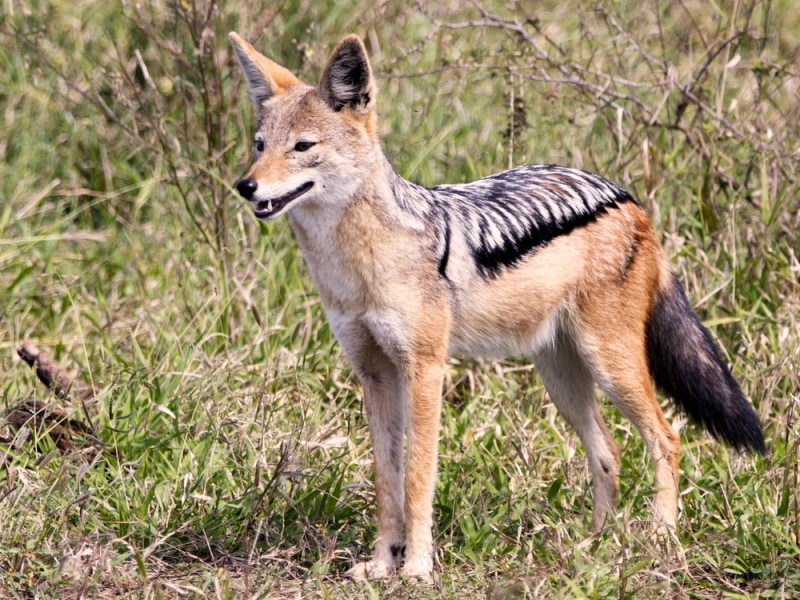
Jackals belong to the same family as dogs—Canids. However, they aren’t dogs. The Canid family contains many “dog-like carnivores,” including dogs, wolves, jackals, foxes, and coyotes. Jackals are less related to dogs than most other dog-like species, like wolves and coyotes. The only exception is the Golden Jackal, which is more closely related to dogs than other jackal species.
“Jackal” refers to many species, including the black-backed jackal and the side-striped jackal. Despite all being called jackals, some species aren’t closely related.
Both the Black-backed Jackal and side-striped jackal belong to the Lupulella genus. On the other hand, the dog is in the Canis genus. The Golden Jackal is in the Canis genus, though, making it related to the dog. However, they are still different species. No jackal is in the same species as the domestic dog, though they are a “dog-like carnivore.”
Characteristics
Jackals look similar to dogs, which may be why they are often confused as a type of dog. All species of jackal have slightly different characteristics. However, they are all about the same size as a smaller domestic dog. Often, they weigh between 11 to 26 pounds and stand around 16 inches. They aren’t as large as other members of their genus, such as wolves. Instead, they’re closer in size to a coyote.
The distinguishing characteristic of each jackal species is found in its name. For instance, the Golden Jackal has a pale gold coat, though the exact color varies with the season. The Black-backed Jackal has black hairs on its back from neck to tail. The rest of its body is reddish-brown. The Side-striped Jackal has black side stripes, with the rest of their body being light grey or tan.
Jackals are not a domestic species. They weren’t domesticated with the dog and aren’t kept as pets. You shouldn’t treat wild jackals the same way you would treat a stray dog. They’re wild animals and can be potentially dangerous, although small.
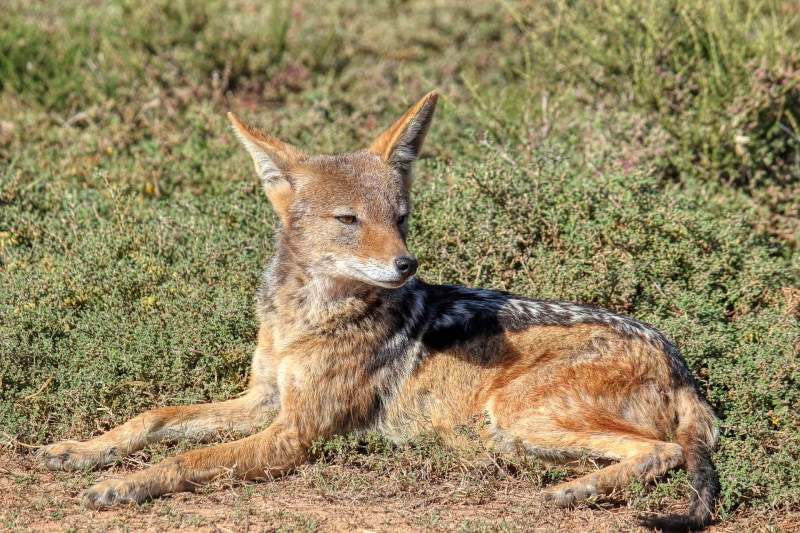
Habitat
Jackals live in Africa, but each species lives in a different portion of Africa. For instance, the Black-backed Jackal mostly lives in savannas and woodland. They live on the continent’s southern tip and along the eastern coastline. However, the Olduvai Gorge largely separates the southern and eastern populations. Despite being the same species, the two populations rarely intermix.
The Side-striped Jackal prefers moist environments, such as marches and bushlands. They may also live in mountainous areas. The Golden Jackal prefers drier environments, such as deserts and open grasslands. They’re the northernmost species—with some Golden Jackals living in southern Europe and Asia.
Diet
Jackals are omnivores, similar to dogs. They’re very opportunistic eaters, meaning that they will eat just about anything they come across. They’re more than willing to consume what other animals have killed, though they will also do some of their own hunting. They’ll also consume insects, berries, fruits, and grass.
When possible, jackals will consume meat. However, if meat isn’t available, they can live on plant matter for a time. In this way, they eat a diet similar to the modern dog.
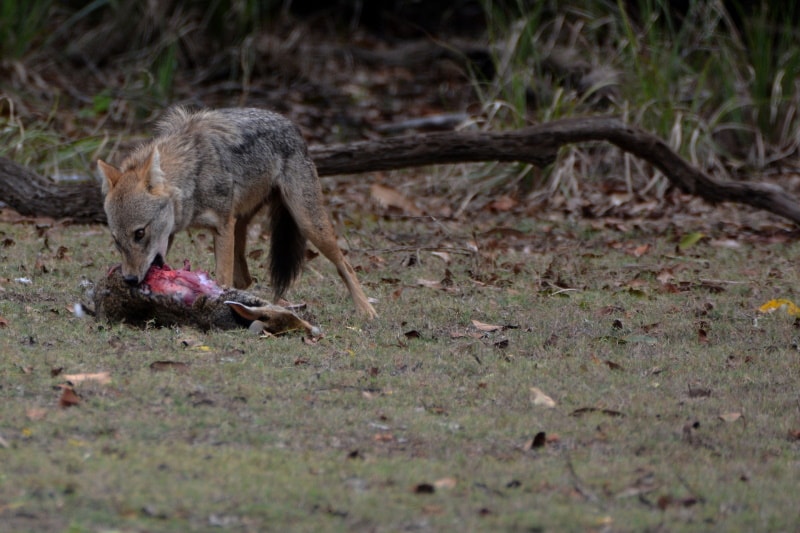
Behaviors
Jackals differ in their social behaviors. Some are very pack-oriented, like our modern dogs, living together in small family groups. Often, these packs include around six members that are all related. However, some jackals aren’t very social, preferring to live alone or in pairs. Behavior isn’t necessarily tied to species. Just like with dogs, jackals have a range of temperaments that affect their behaviors.
Jackals are most active at dawn, dusk, and night. They don’t fit easily into the diurnal vs. nocturnal dichotomy we’re used to. Instead, they can adjust their sleeping schedule to fit their needs—a bit like humans. They aren’t strictly one or the other, though different populations often have different learned schedules.
Jackals mate for life and form very strong relationships with their mate. Jackal pairs eat and sleep together. They are very territorial and will defend their territory from other jackals and potential threats. Jackal pairs hunt together and are far more likely to be successful. Therefore, jackals in mated pairs have a higher survival rate than single jackals.
Both parents help care for the puppies when they are born. Often, litters contain between two to four babies, who are born in an underground den. Newborn jackals are very similar to newborn dog puppies. They’re completely helpless and have their eyes shut for around ten days. They live on their mother’s milk and regurgitated food until about 2 months when they are weaned.
A mother jackal changes her den every 2 weeks or so to prevent the puppies from being found. Birds of prey are the most common predator for jackal puppies.
The babies start to hunt at around 6 months, but it takes them a while to perfect this practice. They reach sexual maturity sometime between 11 months, which may cause some jackals to leave their parents. However, others may stick around to babysit their parent’s next litter and feed their younger siblings. They may form packs similar to wolves in this way.
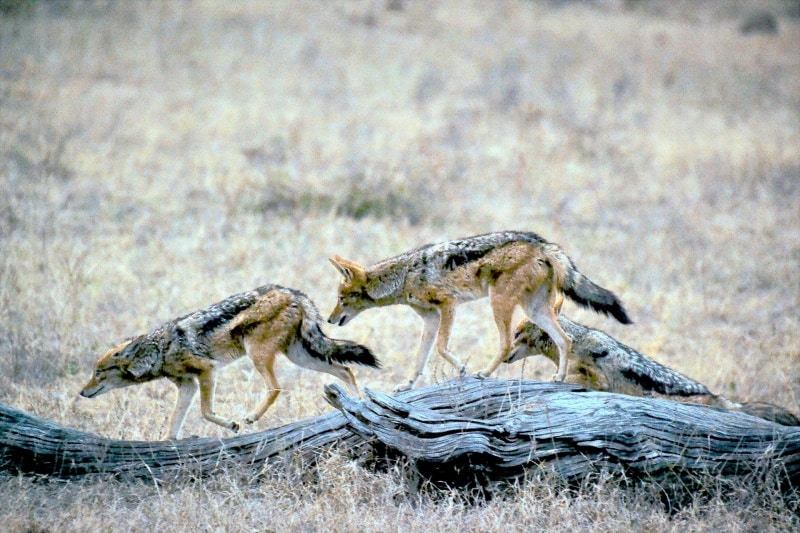
Bottom Line
Jackals are related to dogs and other “dog-like carnivores,” like wolves and coyotes. However, they aren’t the same species as dogs. Instead, most jackal species aren’t related closely to dogs, though one jackal species is found in the same genus.
They have similar behaviors and characteristics as dogs and wolves—they may even form wolf-like packs. They’re opportunistic eaters, meaning that they eat just about everything. They do hunt but aren’t above scavenging.
Jackals are a completely different species from dogs. They shouldn’t be treated the same as feral or stray dogs. They’re wild animals that have never been domesticated.
Featured Image Credit: Bruce Crossey, Shutterstock



